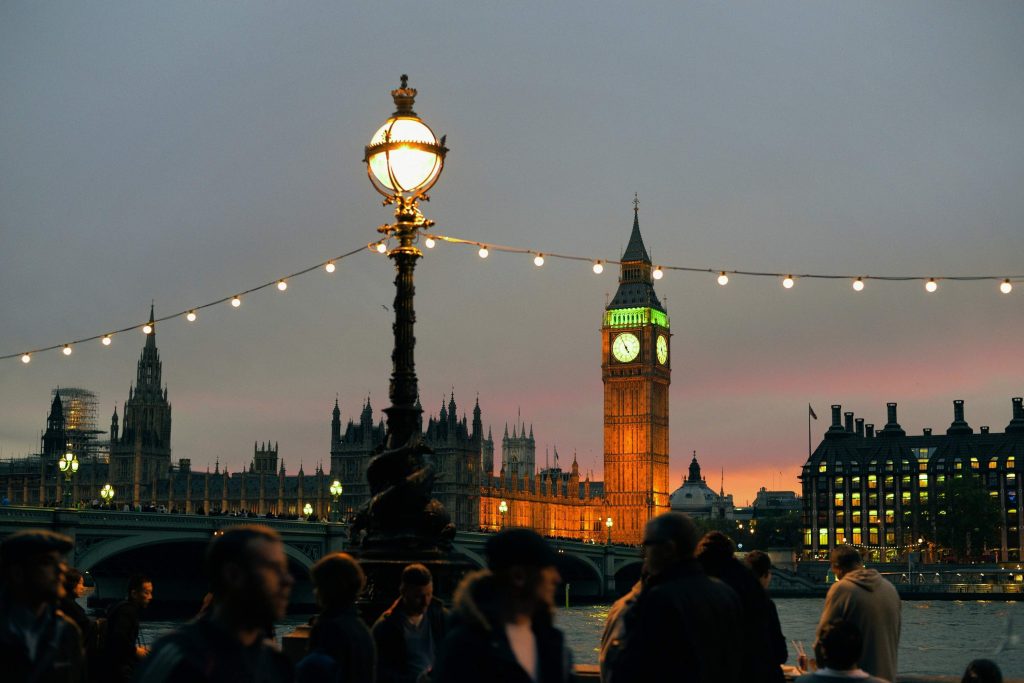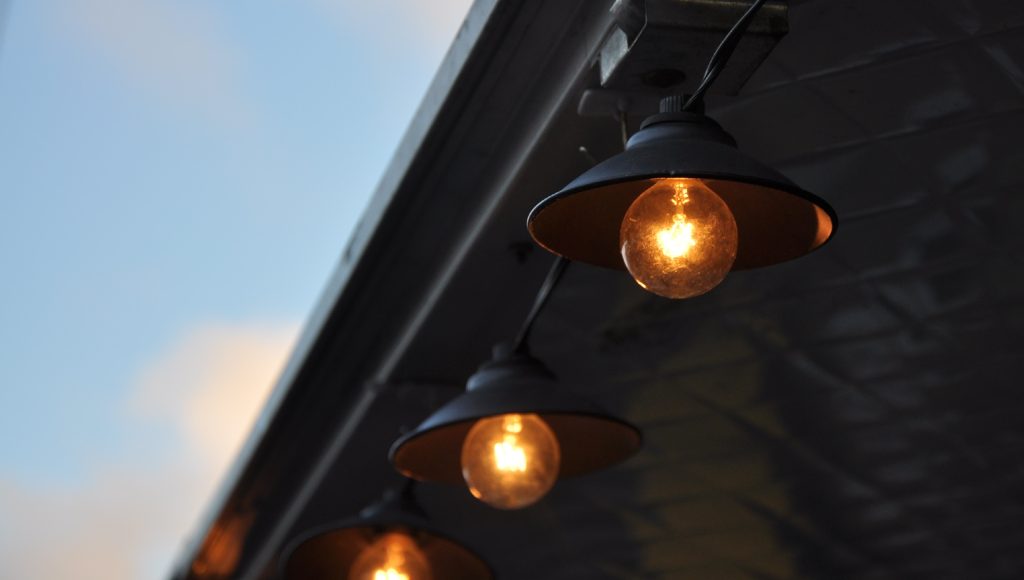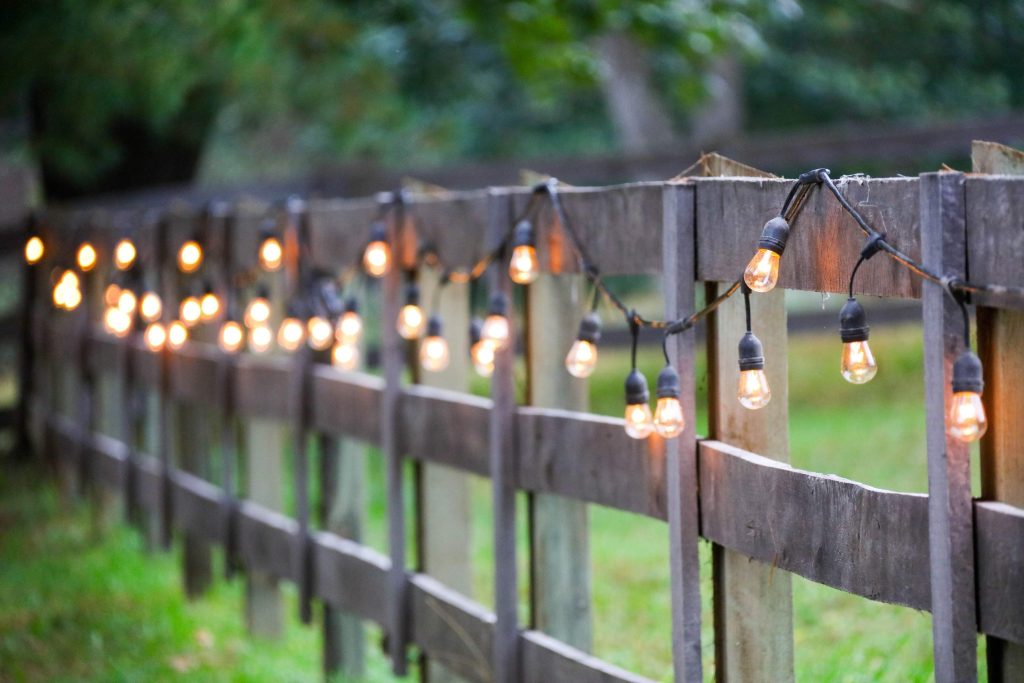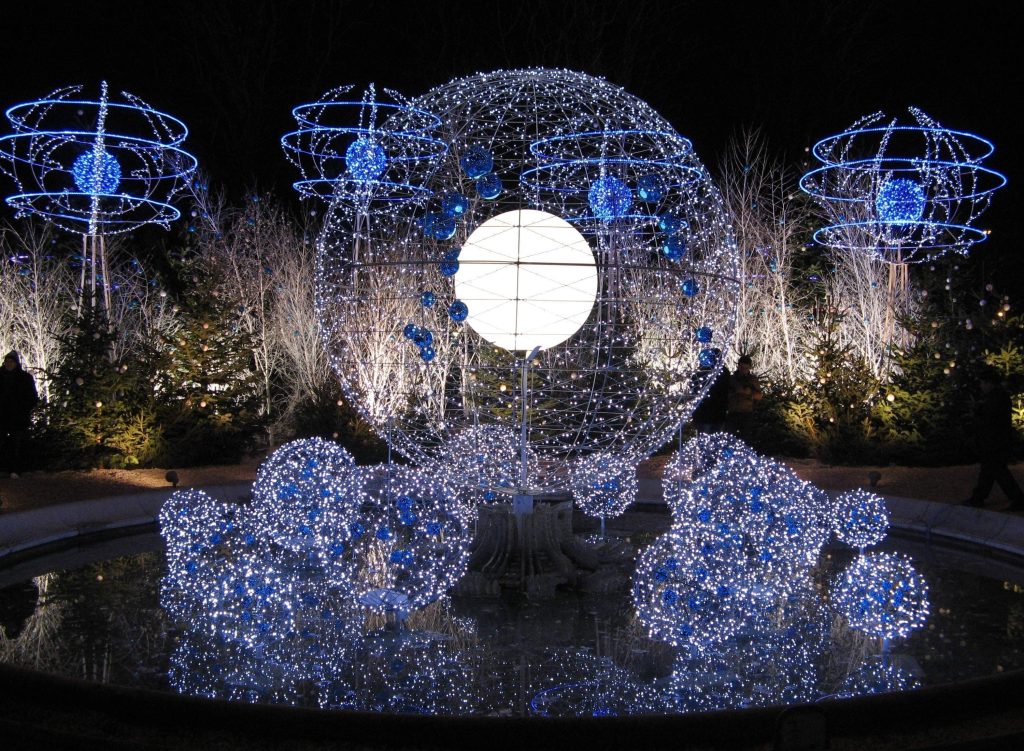Guide to Hardwiring String Lights: Can it Be Done?
String Lights: A Versatile Approach to Lighting
String lights, often also referred to as fairy lights, are a versatile and enchanting form of lighting that has been capturing our fascination for decades. These charming sources of lighting have transcended their traditional festive use in Christmas decor and are now prevalent in everyday indoor and outdoor spaces. Commonly used for enhancing aesthetics, they effortlessly transform ordinary environments into magical settings.
Landscape string lights, a popular variant of string lights, have become an integral part of landscape lighting design due to their ability to create warm, welcoming atmospheres. They can be artistically draped over trees, strung along fences or walls, or hung above patios and decks to bring a touch of whimsy to outdoor spaces. Additionally, they’re often seen adding ambience at weddings or other celebratory events.
The charm of string lights lies not only in the captivating glow they emit but also in their flexibility. They can comprise different types of bulbs, such as LEDs or incandescent bulbs, and come in various shapes and sizes – from tiny twinkling lights to large globe-shaped bulbs. Despite their seemingly simple design, string lights have a complex structure that consists of multiple tiny bulbs attached along a length of electrical wire.
The wire provides the path for electricity from the power source – often a standard wall outlet – allowing each light bulb on the string to glow brightly when connected. String lights’ unique combination of versatility, aesthetic appeal, and functionality has made them popular for numerous applications ranging from residential landscape lighting setups to grand event decorations.
An Insight into the Concept of Hardwiring
In the world of electricity and electronics, ‘hardwiring’ is a term you may come across frequently. Hardwiring refers to connecting electrical systems directly into your home’s main electrical system, rather than using a plug that goes into an outlet. This method provides a permanent power connection, ensuring that the device or appliance is always ready to perform its function.
Hardwiring is common in various household appliances and fixtures. For instance, many dishwashers, ovens, and landscape lighting systems are hardwired into the home’s electrical system. This type of installation requires more effort and expertise compared to simply plugging an appliance into an outlet but offers greater reliability.

However, one must note that hardwiring isn’t always practical or necessary for every device or fixture. The suitability of this approach hinges on various factors such as the nature of the device, its power requirements, and how frequently it needs to be moved or replaced. In addition to these considerations, safety is a significant factor in deciding whether to hardwire a device.
Hardwiring involves dealing with live wires directly tied to your home’s main electrical source, which can pose risks if not handled correctly. Thus understanding what hardwiring entails – from its definition to its applications and implications – is critical when considering this method for powering devices such as string lights.
A Luminary Query: Can String Lights Be Hardwired?
Given their prevalence in modern lighting design and their diverse applications – particularly in landscape lighting – it’s only natural for one to wonder: Can string lights be hardwired? It’s indeed an intriguing question considering that most string lights are designed for plug-and-play convenience rather than permanent installation.
The answer isn’t straightforward due to variances in string light designs as well as individual homeowner needs. However, exploring this notion further will shed light on both the feasibility and practicality of hardwiring string lights. This exploration will involve diving deeper into understanding string lights structure and working, as well as a more thorough examination of hardwiring and its implications.
Practical considerations such as safety aspects, the process involved, and potential risks associated with hardwiring string lights will also be detailed. Real-life case studies and examples where string lights have been successfully hardwired will provide further insights into this topic.
Comparisons will also be drawn between professional installations and DIY projects to help readers make informed decisions about their own landscape lighting setups. Ultimately, the goal is to provide an in-depth analysis that addresses the central question: Can string lights become a permanent, hardwired component of your home or landscape lighting system?
Understanding String Lights
Delving into the World of String Lights
String lights, often referred to as fairy lights or festoon lighting, are small light bulbs linked together by a flexible electrical wire. This unique lighting solution has grown significantly in popularity due to its versatility in creating a warm and magical ambiance. They’re commonly used for various purposes, such as ornamenting holiday trees or illuminating outdoor living spaces.
In the realm of landscape lighting, string lights have particularly gained traction. With their ability to transform ordinary spaces into whimsical settings, they can be wrapped around trees, draped across pergolas, or strung along fences, providing a soft and intimate glow. These alluring attributes have seen their use extend beyond just festive seasons, becoming an integral part of everyday decor.
The Many Facets of String Lights
There exists an extensive variety of string lights differing by shape, color, size, and functionality. Traditional incandescent bulb string lights remain popular but are gradually being phased out in favor of LED string lights due to lower energy consumption and longer lifespan.
For instance, globe string lights with round bulbs create a vintage atmosphere reminiscent of old Italian piazzas, while mini LED string lights offer a delicate brilliance ideal for indoor decorations such as mantelpieces or centerpieces. It’s also worth noting solar-powered landscape string lights that harness solar energy during the day to light up gardens at night, offering both sustainability and aesthetics.
Common Features and Specifications
String light features can vary greatly depending on their intended use. Indoor versions often employ smaller bulbs with lower lighting intensity, while outdoor versions typically consist of larger bulbs that produce more light output to cover larger areas effectively.

Key specifications include bulb type (LED or incandescent), power source (electricity or solar power), color temperature (ranging from warm white to bright white), wire length (typically ranging from 10 to 50 feet), and weather resistance (especially important for outdoor applications). Some models also come with features such as dimmability or color-changing abilities for added customization.
The Inner Workings of String Lights
String lights function through a series of low-voltage bulbs connected in a series or parallel circuit. This design allows the rest of the bulbs to remain illuminated even if one burns out. The low-voltage nature of these lights contributes significantly to their energy efficiency, making them an environmentally friendly choice.
The power source is integral in determining how the string light operates. Electrically powered string lights are usually plugged into an outlet and are best suited for indoor use due to their constant power supply. On the other hand, solar-powered string lights absorb sunlight during daytime hours, which is then converted into electricity stored in a built-in battery ready for use when darkness falls.
Deciphering the Role of Bulbs and Wiring
At the heart of string lights are the individual light bulbs, providing that warm glow we’ve come to associate with these decorative pieces. Each bulb consists of a diode (in LED versions) or filament (in incandescent versions) that emits light when electric current passes through it.
As for wiring, it plays two crucial roles: providing structural support and acting as an electrical conduit between each bulb. The wire’s material must not only be flexible enough to allow creative placement but also robust enough to withstand varying conditions, especially in landscape lighting applications where they could be exposed to harsh weather elements.
Demystifying Hardwiring
At its simplest, hardwiring is a term used to describe the direct connection of an appliance, such as landscape lighting or other household devices, to the electrical circuit of a building. This process bypasses the need for temporary power sources like plugs or external batteries. Instead, hardwired devices are integrated into the electrical system of a structure, drawing power continuously from this source.
Hardwiring in general offers a level of permanence and reliability that stands unparalleled. It eliminates problems associated with loose connections or worn-out batteries that often plague plug-in devices. Moreover, hardwired systems are often tucked away behind walls or other structures, providing a clean aesthetic devoid of unsightly wire clutter typically associated with plug-in systems.
However, not all is rosy in the realm of hardwiring. The very permanence that serves as its strength may also be seen as a drawback. Hardwired installations are generally more expensive and time-intensive than their plug-in counterparts due to their complexity and the need for professional installation services.
The safety risks associated with incorrect installation can also be significantly higher for hardwired systems compared to plug-in devices. With electricity involved, any missteps can lead to serious consequences ranging from electrical fires to potential harm towards oneself.
Despite these drawbacks, many homeowners still prefer hardwired solutions for their assured longevity and sleek aesthetics. In cases where frequent adjustments or portability isn’t required – such as outdoor landscape string lights – hardwire installations can be particularly advantageous.
The Anatomy of Hardwire Installations
To gain insight into why someone might choose (or not choose) to hardwire their landscape lighting – including string lights – it helps to understand how exactly this process unfolds. The foremost aspect involves careful planning – determining where the lights will be placed and how the wiring will connect to a power source.
This includes selecting an appropriate circuit within the property’s electrical system to tap into. Once that’s done, installing hardwired lighting systems typically involves running wires through walls or other structures and connecting them to an electrical box.
The lighting fixtures are then connected to these wires while ensuring all connections are secure and properly insulated. Doing so requires a degree of technical knowledge about electrical systems, including understanding circuit breakers, grounding methods, and wiring safety protocols.
As such, unless one has prior experience or expertise in dealing with electrical systems, it is often recommended that they hire a trained electrician for this process. With the aid of an experienced professional, though, hardwiring landscape string lights or any other forms of landscape lighting can be made relatively straightforward.
And once done correctly, it offers an almost maintenance-free solution for years to come – something plug-in systems may struggle to match. In this context – where reliability and aesthetics rank high on the priority list – hardwiring indeed finds its niche as an attractive alternative for outdoor landscape lighting solutions like string lights.
String Lights and Hardwiring: An Enlightening Examination
The Feasibility of Hardwiring String Lights
The question of whether string lights can be hardwired requires a nuanced consideration. Some factors to consider include the type of string lights, the electrical system they are to be integrated into, and the specific usage setting.

Many types of string lights, including landscape string lights, can indeed be hardwired. For instance, permanent exterior installations like landscape lighting commonly utilize hardwired systems for increased robustness and reliability. However, not all scenarios lend themselves to hardwiring.
String lights designed for temporary or seasonal use often feature plug-in designs for their convenience and flexibility. Furthermore, DIY enthusiasts without significant electrical experience should exercise caution when considering this approach due to potential safety risks.
Unraveling the When’s and Why’s: Suitable Scenarios for Hardwiring
Hardwiring is typically chosen over plug-in systems when a permanent lighting installation is required. Examples include outdoor landscape lighting around walkways or patios where an enduring installation is desirable or necessary due to a lack of nearby power outlets.
In contrast, situations that may not be suitable for hardwiring often arise in indoor settings. Temporary decor, such as Christmas or party decorations that utilize smaller LED-based string lights, often require flexibility in their use and removal, where hard wiring may prove unnecessarily complex.
Coming Unstrung: Scenarios Advising Against Hardwiring
There are certain instances where it might not be recommended or even possible to hardwire your landscape string lights. For example, if you have portable or movable features in your garden, like lanterns that need periodic relocation depending on your landscape design changes, it’s practically insensible to opt for hard wiring.
Similarly, vintage-style Edison bulb string lights are normally used as temporary accents rather than permanent fixtures due to their decorative nature. Hardwiring these could potentially diminish their charm, as part of their appeal often lies in their simplicity and ease of installation.
Bringing Light to Dark Corners: How to Hardwire String Lights?
Should you decide that hardwiring is the right approach for your landscape string lights, there are a few key tools required for the process. These include a weatherproof junction box, electrical conduit and fittings, electrical wire of suitable gauge, wire connectors or nuts, a multimeter, and tools such as a wire stripper and screwdriver.
Remember, safety is paramount when dealing with electricity! Start by identifying an appropriate power source for your landscape lighting. Using the junction box, connect your string lights to this power source via the conduit and wires. Always ensure that all connections are secure and protected from exposure to weather elements.
A Step-by-Step Guide: Safe Installation Practices
Before beginning any hardwiring project, ensure you have shut off power at the breaker box to avoid any accidental electric shock. Next, identify where you want your landscape lighting installed. Follow this by drilling the necessary holes if needed and then run your wiring through these holes using a fish tape or similar tool.
Connect your wires following color conventions – black (or red) for ‘hot’, white for neutral, and green (or bare copper) for ground – using wire connectors or nuts. After completing all connections securely within the junction box, use a multimeter to check voltage levels before restoring power at the breaker box.
Continually test each segment as you work through this process – from initial connection in the junction box through each string light fixture – before restoring full power. This step-by-step protocol will not only ensure that your installation is successful but also safe.
Case Studies & Examples
A Panoply of Lighted Success: Real-Life Examples of Hardwired String Lights
Perusing the annals of landscape lighting designs, we stumble upon myriad examples where string lights have been successfully hardwired.
A notable case presents itself in the form of a bespoke Italian restaurant in San Francisco. The restaurant owner sought to create an alluring al fresco dining experience, reminiscent of a tranquil night on Venetian gondolas. This was accomplished by interspersing myriad landscape string lights across the patio and hardwiring them into the existing electrical system. The end result was an enchanting, twinkling canopy that greatly enhanced the ambiance.
Another compelling example hails from a suburban residential setting in Melbourne, Australia. Homeowners here opted for hardwired landscape string lights to revamp their outdoor living space. By ensnaring these luminous filaments around trees and pergolas, they breathed vibrance into their backyard parties and barbecues.
Landscape Lighting: A Ballet between Professional Installations & DIY Projects
The world of landscape lighting is a tapestry woven with threads from both professional installations and do-it-yourself (DIY) projects. As such, understanding these varying landscapes is key.
Professional installations typically involve certified electricians who bring their technical acumen to install string lights safely and efficiently while complying with local codes and regulations.
An example includes New York’s famed Central Park, where complex designs necessitated professional intervention. Here, string lights were meticulously hardwired into the park’s main power source by professionals who ensured every light functioned seamlessly whilst maintaining essential safety standards.

In contrast, DIY projects offer homeowners an opportunity to personally design and implement their desired lighting effects using commercially available string light kits designed for this purpose. A picturesque example would be a quaint cottage based in rural Scotland that saw its owners hardwire string lights to create a fairytale-like aura around their property.
However, while DIY projects afford one the luxury of customizing personal spaces in a cost-effective manner, they may pose certain challenges. These may include the risk of electrical mishaps and lack of professional expertise, which could result in less than optimal outcomes. Therefore, it is crucial to consider all these aspects before embarking on any landscape lighting project involving string lights.
Potential Risks & Safety Precautions
Unveiling the Possible Hazards of Hardwiring String Lights
The process of hardwiring landscape string lights, like any electrical undertaking, is not without its potential risks. Among the most significant is the risk of electric shock, which can result in serious injuries or even fatalities. This danger is particularly prevalent when working with outdoor lighting systems due to the increased risk of ground faults and the potential for moisture to come into contact with live wiring.
Another principal concern is incorrect installation leading to fire hazards. Wiring that is improperly installed or insulated can overheat and lead to short circuits, posing a very real risk of fire. The devastation fires can cause to property and life should never be underestimated.
Furthermore, there’s a chance for system failure if landscape string lights are not properly hardwired. Ineffective lighting might seem a minor inconvenience in comparison, but it could leave areas dangerously dark or create unpredictable bright spots that could be hazardous for navigation after sunset.
There’s also a long-term risk associated with incorrect hardwiring practices: repeated repair costs. If your landscape string lights are not correctly installed from the outset, you may find yourself repeatedly paying out for costly repairs and replacements down the line.
Mitigating Electrical Safety Concerns
To manage these risks effectively and ensure your landscape lighting project remains safe from start to finish, several safety considerations must be adhered to diligently.
Firstly, it’s absolutely essential that anyone undertaking such a project has adequate knowledge and experience in dealing with electrical systems. Understanding how circuits work – including how they fail – will help prevent many common issues before they occur.
Secondly, using the correct tools for the job is vital; appropriate wire cutters or strippers should be used rather than general-purpose tools, which might damage wires or insulation.
Thirdly, all electrical work should be performed with the power source deactivated. This simple safety measure can prevent a multitude of accidents.
Proper insulation and weatherproofing are key to creating a functional and long-lasting outdoor lighting system. If you are in any doubt about the correct procedures or materials to use for your project, professional advice should be sought.
Effective Ways to Mitigate Risks
Some effective ways to mitigate these risks include regular maintenance checkups on your landscape string lights. This will help ensure that all components are working correctly and highlight any potential issues before they become hazardous.
In addition, ensure you have installed a ground-fault circuit interrupter. A GFCI will instantly switch off an electrical power circuit when it detects current is flowing along an unintended path, such as through water or a person – thereby preventing serious harm from electrical shock.
Also, consider hiring a professional electrician for the initial hardwiring process. They possess extensive knowledge of various types of landscape lighting systems and can handle any unforeseen obstacles that may arise during installation.
Conclusion: Can String Lights Be Hardwired?
While there are risks associated with hardwiring landscape string lights, proper knowledge and execution significantly reduce these risks. By understanding the challenges and taking appropriate safety measures, installing beautiful and secure landscape lighting is an achievable task.
Remember that there’s no shame in calling on professionals if parts – or all – of this task seem out of reach; your safety should always come first. In the end, successful hardwired lights will add beauty to your surroundings while providing reliable lighting for many seasons to come.
You may also be interested in the following posts:
